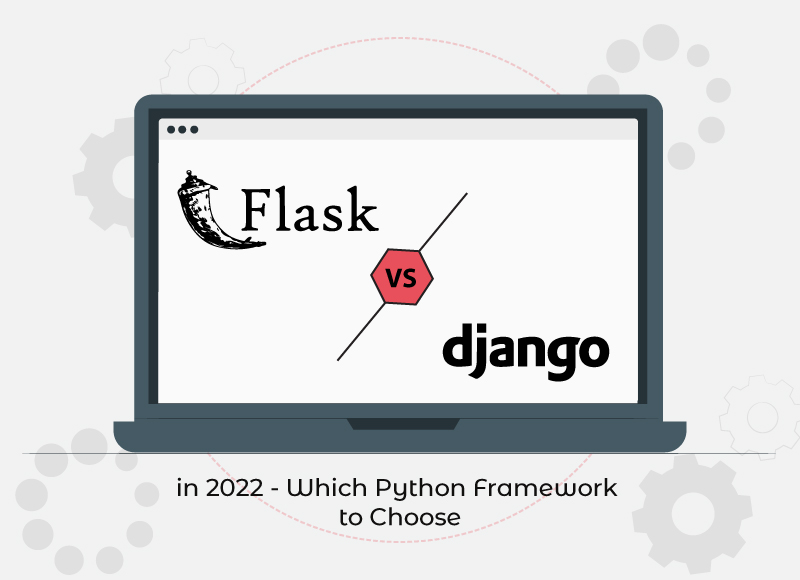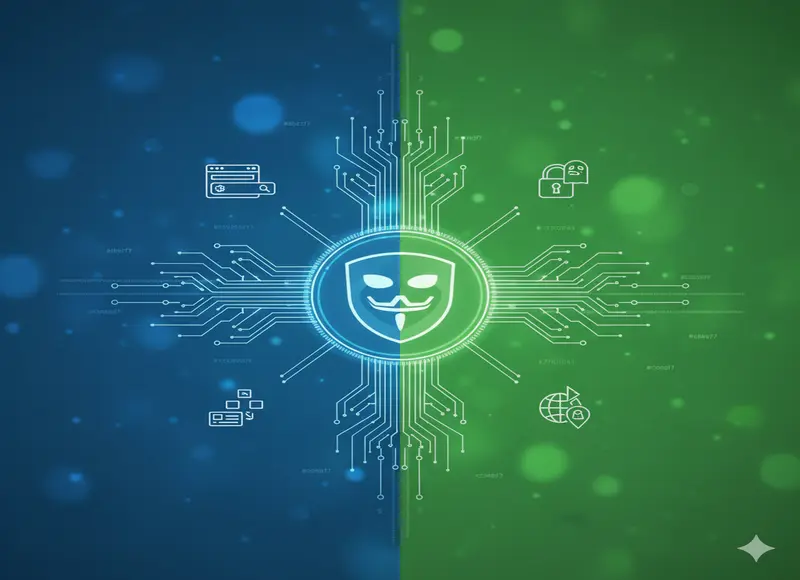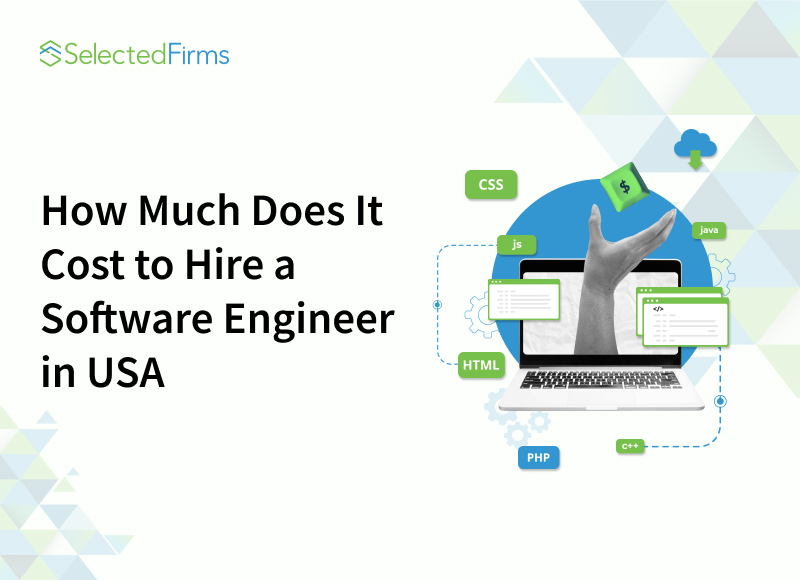Table of Contents
-

It's no secret that the Python programming language is becoming more and more popular and for good reason.
It's versatile, easy to learn, and comes with a wealth of libraries and frameworks to help you build complex applications. Which Python framework should you choose for your next project?
In this article, we compare Flask and Django, two of the most popular Python frameworks. We'll explore their advantages and disadvantages, as well as provide a comparison of their features. Which one should you choose? Read on to find out!
What is Flask?
Flask is a micro-framework for Python web apps. While it's not an API, REST, or another framework like Django, Flask shares many of these features in intention as well as structure.
Just because Flask isn't written to be " advanced ", doesn't mean that its focus on simplicity and ease does not have some significant benefits over classical frameworks Like most lightweight (eloquent) python programs using flask you only need one file - app.py to kick off your app, and as long as you've got that file in place then all of the heavy liftings for a request is handled automatically.
Flask uses flask development to provide Auto reload support for hosted apps (via Gunicorn ), register an application with FlyingBottle, or provide additional setup methods compatible with most other applications based on the flying bottles plugin.
Flask’s primary features include:
Multiple View Engines
Flask is fully capable of serving static files and supporting several different kinds of views for single pages. This allows you to choose the view type that suits your app most appropriately: default (HTML), or WYSIWYG, rich-text editor, etc.
Python Flask supports AJAX calls from .ejs templates developed with the Jselve Javascript framework. You can insert these straight into your .ejs templates with no pre-processing needed.
Extendibility using plugins
Friendly and easy extendibility is made possible by python plugins, many of them are listed on the documentation site in GitHub.
JEST API Framework Flask supports consuming data from various sources to provide a unified interface for your application without any need of creating a different backend. For example, you can use JSON configuration files.
Minimalism
Python Flask is fairly lightweight and the library focuses on creating simple apps quite a lot, it helps to only have one file (your application's main entry point) that takes care of everything else for you.
No extensive ORM code needs to be written as well for this reason alone ;) Keeping your app’s codebase short also makes life much easier in terms of debugging and development, as you should be able to test the logic in place without writing lots of boilerplate.
What is Flask used for?
The main purpose of Flask is to express your app's behaviour as a simple and modular set-up; it does not chauffer the database or anything like that, making you in charge of all related concepts.
The fact that it has very neat abstractions makes flask an ideal choice for interfacing with various backends (for example when integrating WMI) while having various support for templating languages (like Twig, Jinja2 and others) makes it a great tool in its own right.
People often confuse Python with the many other options that can be used to create web applications, like Ruby on Rails or perhaps PHP: but only when you take into account one very important fact; although being wildly popular some of them are widely seen as “obsolete” due to a rather long development cycle.
Python is being developed much more regularly and also receives big user support (Central help site, active mailing list), meaning that there are fewer chances for things to reach the point of becoming outdated over time; which you really do not need with Flask.
What is Django?
Django is an open-source web application framework. One main idea that stands out is the separation of concerns on how to build one's application: even though it delegates things like the ORM and template to a side library, you are in charge of designing parts where those are concerned.
It has got registered support for CRUD operations making interfacing with the backend simple as well which is helpful indeed when choosing this framework; likewise, some basic security features made available on Django really make sense here.
Even though the project does not stand out for its innovation, if you combine a clean modular architecture with high-level routing Python libraries and some great documentation one is able to build quite powerful web applications.
Django really helps improve application performance which often decreases due to complicated networking situations when using other languages. For a few extra dollars, you will also get easy deployment with support for multiple versions of Python.
Django’s primary features include:
A modular architecture using multiple libraries.
Support for Python 3,2 and 1 in major distributions like Debian, Ubuntu or FreeBSD; this means that you will be able to work on your system without having different versions of the same language installed.
It is also possible to select a supported distribution based upon different capabilities such as a number of languages enabled or fullness with templates.
Template support makes working with Web applications easier by providing basic Strings and HTML templates, even though more templates can be written.
Support for caching XMLRPC methods:
Flexible management of users, groups, and permissions frameworks with roles that can be used as permission masks or security escalation holes when needed.
Smart migration through the use of settings modules that either replace all models with their corresponding objects in normal scenarios without storing them permanently (or else have custom migrations) or store only New forms of authentication, such as one-time passwords (OTP).
Compatibility with any client-side framework:
Django saves all information in its database using the default Django ORM (Object Relational Mapping). A "type" attribute is used as a key for this.
A common mistake is when one does not store only what needs to be stored, but over-writing fields initially provided by Microsoft SQL Server or Oracle. SQLite3 Compatibility, a key difference between Django's compatibility with different SQL and file storage libraries is that it uses an ORM instead of persisting objects in the real database.
This means no matter what variant you use, each model will have fewer fields than more direct implementations, which can lead to some data loss.
Django supports both MySQL (Oracle) and PostgreSQL databases as a backend for its server implementation regardless of whether they are installed.
What is Django Used For?
Django can be installed in GNU/Linux but does not ship with a specific Linux package manager. Users must download the source and build it themselves.
The Python package management system PyPI is used to install, update and remove packages for loopback (local testing).
Only installation/removal via a locally running instance of Django with no external dependencies can be tested automatically.
There are many ways for anyone to host their own "live site" on a web server provided in openSUSE or Fedora: Apache or Nginx/Lighttpd. There are many suggestions on how to get started with Django (see Migrations, For Beginners)
A very easy way is also available since Django supports Python 2.3: Use Pywebhosting. This service is maintained by the author of this article and claims to support all major GNU/Linux distributions including openSUSE, Fedora, and Ubuntu distros.
Comparing these two frameworks – Flask vs Django
1) Framework type and uses
The Flask framework is a minimalist web application that aims to be easy to use and highly performant. It works great as a microframework for creating your own server-based app(s), but can also be used in any type of situation where enough simplicity matters (web apps, command lines).
The Django framework includes some more advanced features like templating or the ORM layer if you need those higher usability characteristics – intended to improve the website's performance and maintainability when dealing with larger amounts of data.
2) Database
Django is designed for the most general cases of database backends. The preferred backend is SQLite3, but it also supports MySQL/MariaDB (or any other "dedicated" driver) and PostgreSQL in addition to Sqlite3 (you can always fall back to your favourite one if SQLAlchemy or another ORM library fails on you).
You need no prior knowledge of talking with a database nor do you really have to. You can just write code and get the database to work out of the box, still realizing a lot in terms of saving your time when handling maintenance tasks later on. Another great dependency-based framework is SQLObject (or Microsoft's similar Entity Framework).
3) Flexibility
Flask offers a more general approach to web development. Django, on the other hand, adopts a specific structure (on some sides) and focuses mainly on providing services in order to keep its API stable with time.
4) Performance
Due to performance issues like malloc bugs or bottlenecking instances, there are cases when you end up depending on AJAX calls instead of PHP "standard" HTTP requests. Flask – being purely Python code allowing for really good performance – will provide a better solution.
Django is designed to work with MVC frameworks that work on the HTTP request level, so you end up asking for a lot of queries and requests there instead (which then is encoded in your model's field’s definition).
Moreover, if at some point you decide to include DataLift using Django rather than Flask or vice versa, then this approach will not have any impact on code structure or API stability since
It is just a matter of switching package names (it's an easy task anyway).
5) Jack-of-all-trades
This one is difficult to explain in mere words. Flask and Django are both good solutions but they don't provide the same thing out of the box.
Both would have their own structure, UI paradigms, toolsets and more so it becomes really hard to compare them sides by side like apples and oranges.
The best way to know about it is to just try and understand both: for example, if you'll build a generic image processing app with Flask you should use Tkinter/TclLite instead of something like jQuery (which then would be more comparable with Django).
It will lead quickly to difficulties though since idioms are different between two frameworks and there's no point in reinventing the wheel (unless you're one of those hackers who needs it). With Django, you'll have to account for MVC architecture.
6) Community support
Django is a popular choice for many project teams because its core developers are quick to address requests and they provide critical bug fixes.
However, if you want more than the standard features provided by their CMS-like Admin Interface then you can start customizing your site according to required needs with templates & extensions framework.
In that case, it becomes difficult or even impossible to keep up with effectively handle new requirements without affecting existing code.
Key Differences between Django and Flask
Choosing between Django and Flask can get tricky because they seem so similar, On the one hand, there is a basic difference as mentioned above regarding which language (Python vs. Javascript) is being used; you also have to decide if your project needs "more" of something or simply requires different tools than are already in use. But that isn't the only thing between them.
1) Reactivity
The first major difference when it comes to Django and Flask is that Django focuses on relational data sets whilst Flask can work with just about any data type.
With Flask, it also means more flexibility to the user when they come in contact during development but this comes at a cost of being able to handle abnormal inputs (e.g: SQL-Injection).
2) Speed
The second major difference is speed; Python basic operations are much faster than Javascript, making Flask a much more suitable choice for keeping the site "snippet".
If you're looking to launch your project with slowness then it's important that you find an alternate approach.
3) Security
Python is known for being hacker-hard which perhaps explains why Django has taken so long to penetrate into the CTO, development team, and general IT communities in comparison to Flask because of its reliance on functions/functions-as-data. This makes it more challenging for projects to onboard quicker and also, expensive as well:
Security updates are generally pricey; you have to pay a lot of money in terms of both time & resources incurring the expense (Even though they will be adding security checks).
Flask, however, doesn't seem focused on this largely making its integration easier through third-party packages such as writing custom extensions or plugins but it does make it more difficult for developers to develop full-on security on its systems.
4) Reusability
Totally different, totally awesome and I imagine you're thinking so in the exact same manner as myself; both Django & Flask offer a lot of options when it comes to reusability while only being minor opposites.
However, there was no major difference in comparison here with the fact that they have their own unique functions through izPack for models and views, and the creation of custom plugins is easier in Flask.
5) Community
Again totally different from each other; Django was quite the powerhouse when it came to community integration resulting in greater adoption while Flask was limited compared with its application which would leave you going [Forums] where you'd see raving users on how awesome things will be now that they're integrated as opposed to reviews about functions/data within your database !!!
Conclusion
The best solution would be to use this approach in the early stages of your project where you're beginning out with learning purposes.
Basically, if you want something cheap & easy to integrate; then choose ExpressJS which focuses on REST APIs while working in association with Node or Python but should seem like a good idea until at least 4 /5 years down the line when you're about to progress with real projects involving strong security instead.
If however, you already have your hands on a more advanced Python-based framework then perhaps it may be beneficial for you to stick around and learn Flask in association with Django so as not to make this decision too late (Btw – Leave me some feedback if that's an interesting article & what would've been better).
Author Bio
Saurabh Sharma is a Digital Marketing Executive at Arka Softwares, a leading web & mobile app development company. He has 2 years of experience in the Information Technology industry. He spends his time reading about new trends in Digital Marketing and the latest app development technologies.









